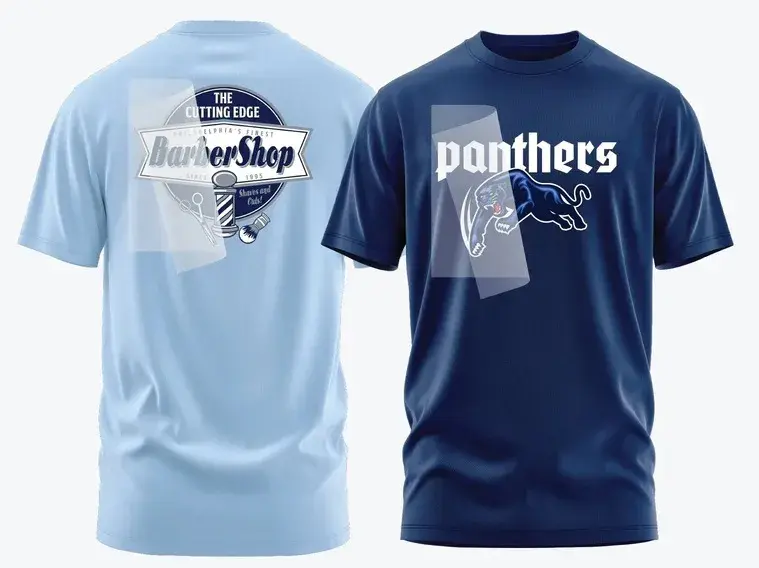T-shirt transfers are a popular way to customize apparel, offering endless design possibilities. Whether you’re a DIY enthusiast or a budding entrepreneur, mastering this craft can help you create unique, personalized clothing. This guide will walk you through everything you need to know about T-shirt transfers, from types to application methods, ensuring your designs stand out.
What Are T-Shirt Transfers?
T-shirt transfers are images or designs printed onto special paper that you can transfer onto fabric. These transfers allow for easy customization of T-shirts without the need for expensive equipment. The process typically involves printing the design on transfer paper and using heat to transfer the image onto the fabric.
Types of T-Shirt Transfers
Understanding the different types of T-shirt transfers is crucial for choosing the right method for your project. Here are the most common types:
- Heat Transfer Vinyl (HTV): HTV is a popular choice for creating designs with a professional finish. It involves cutting the design from a vinyl sheet and then applying it to the fabric using heat.
- Inkjet Transfers: This method involves printing your design using an inkjet printer onto special transfer paper. The design is then transferred to the fabric using a heat press or iron.
- Sublimation Transfers: Sublimation is a process where ink is turned into gas without going through a liquid state, allowing it to permeate the fabric. This method is ideal for pvc fabrics.
- Plastisol Transfers: These transfers are screen printed onto special paper and then transferred to the fabric using heat. They are durable and often used for commercial printing.
See also: Discover the Elegance of Luxury Watches at Make1m.com
How to Choose the Right Transfer Method
Choosing the right transfer method depends on several factors, including the type of fabric, the complexity of the design, and your budget. Here quick guide to help you decide:
- For Cotton Fabrics: Inkjet transfers and HTV are ideal.
- For Polyester Fabrics: Sublimation transfers work best.
- For Complex Designs: Inkjet and plastisol transfers allow for detailed images.
- For Durability: HTV and plastisol transfers offer the best longevity.
Step-by-Step Guide to Applying T-Shirt Transfers
Follow these steps to achieve a flawless transfer:
- Prepare Your Design: Create or select a design using graphic design software. Ensure the design is mirrored if needed, especially for text.
- Print the Design: Print your design on the appropriate transfer paper. For inkjet transfers, ensure you use inkjet-compatible paper.
- Cut the Design: If using HTV, cut the design using a vinyl cutter, ensuring to weed out the excess material.
- Position the Design: Place the transfer paper or HTV onto the T-shirt. Use fire-resistant tape to secure it in place if necessary.
- Apply Heat: Use a heat press or a household iron to apply heat. Follow the manufacturer instructions for climate and time settings.
- Peel the Transfer: Carefully peel away the transfer paper. For some methods, you may need to peel while hot, while others require cooling first.
- Finishing Touches: After transferring, press the design again with a heat press or iron to ensure it adheres well to the fabric.
Common Mistakes to Avoid
Even with the best preparations, mistakes can happen. Here’s how to avoid them:
- Incorrect Temperature: Using the wrong temperature can cause the transfer to not adhere properly or burn the fabric.
- Skipping Pre-Washing: Always pre-wash the T-shirt to remove any chemicals or oils that could interfere with the transfer.
- Not Mirroring the Image: For text-based designs, always mirror the image before printing.
- Insufficient Pressure: Ensure consistent, firm pressure during the heat application to avoid uneven transfers.
Caring for Your Custom T-Shirts
Proper care is essential to extend the life of your custom T-shirts. Here are some tips:
- Wash Inside Out: Turn the T-shirt inside out before washing to Save the design.
- Use Cold Water: Wash in cold water to prevent the design from fading or peeling.
- Avoid Bleach: Bleach can damage the transfer, so it’s best to avoid using it.
- Hang to Dry: Air drying is recommended, but if using a dryer, use a low-heat setting.
Advanced Tips for Professional Results
For those looking to take their T-shirt transfers to the next level, consider these advanced tips:
- Use a Heat Press: While a household iron works, a heat press offers more consistent pressure and heat, leading to better results.
- Invest in Quality Materials: Higher-quality transfer paper and vinyl result in a more professional finish.
- Layering Vinyl: For multi-color designs, layer vinyl carefully to create intricate designs without bleeding colors.
- Experiment with Textures: Try flocked or glitter vinyl for added texture and visual interest.
Conclusion
T-shirt transfers are a versatile and accessible way to create custom apparel. By understanding the different methods, avoiding common mistakes, and applying some advanced tips, you can produce high-quality designs that stand the test of time. Whether for personal use or a business venture, mastering T-shirt transfers can open up a world of creative possibilities.

